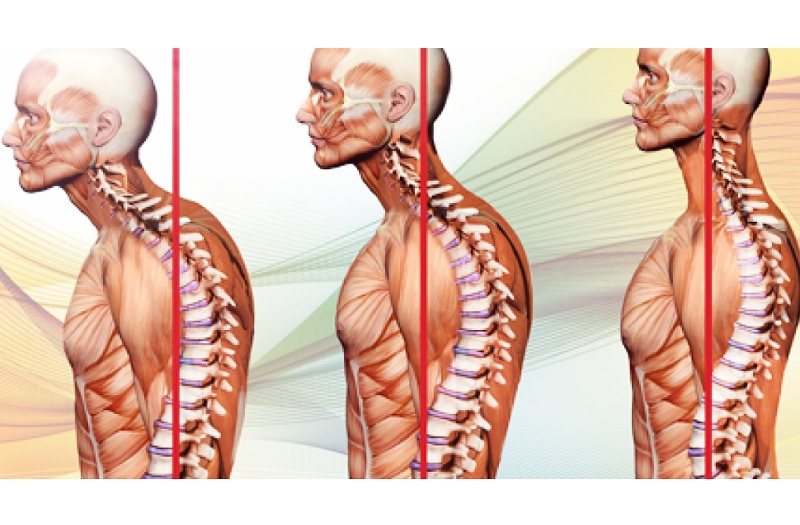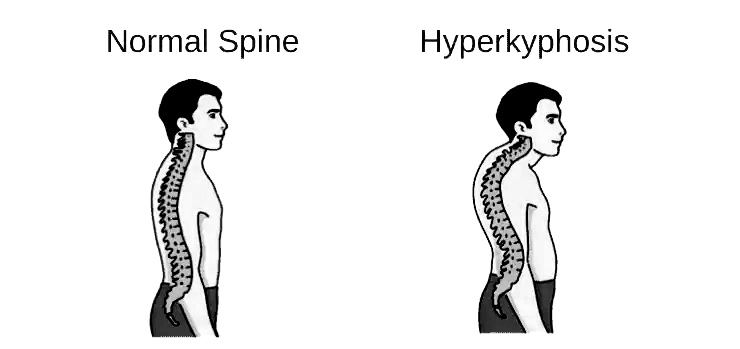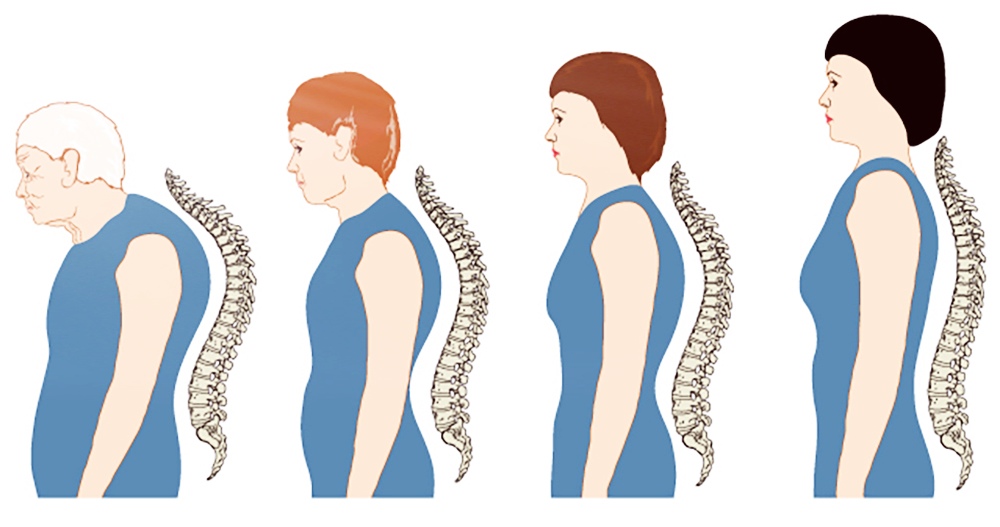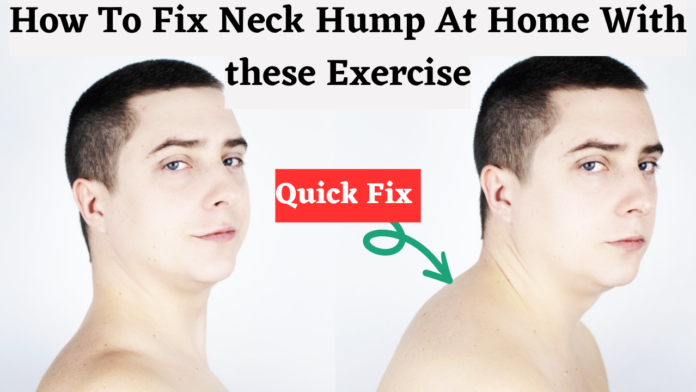
what is neck hump and how to fix it
Neck hump is a condition where there is a noticeable bulge or bump on the back of the neck, just below the hairline. This hump can be caused by a variety of factors, including poor posture, genetics, aging, or medical conditions such as Cushing’s syndrome. The condition can be unsightly, uncomfortable, and even painful, and can have a negative impact on one’s self-esteem and quality of life. Fortunately, there are several ways to fix neck hump and improve overall neck health.
Causes of Neck Hump
There are several factors that can contribute to the development of neck hump.
One of the most common causes is poor posture, which can cause the muscles in the neck and upper back to become weak or strained. This can lead to a forward head posture, where the head is pushed forward and the neck is curved excessively. Over time, this can cause the vertebrae in the neck to shift out of alignment, leading to the development of a neck hump.
Another common cause of neck hump is genetics. Some people may be predisposed to developing a hump on the back of their neck due to the shape of their vertebrae or the way their muscles are structured. Additionally, as we age, our skin and muscles lose elasticity and become weaker, which can contribute to the development of neck hump.
Medical conditions such as Cushing’s syndrome can also cause neck hump. This condition is caused by an excess of the hormone cortisol, which can lead to the accumulation of fat in the neck and upper back. Other medical conditions such as osteoporosis, arthritis, or spinal stenosis can also cause neck hump.
Symptoms of Neck Hump
The most obvious symptom of neck hump is the appearance of a noticeable bump on the back of the neck.
This bump can vary in size and shape, and may be accompanied by other symptoms such as neck pain, stiffness, or limited range of motion. In some cases, the hump may be accompanied by other physical changes such as a rounded upper back or a forward head posture.
How to Fix Neck Hump
The good news is that neck hump can be treated and even prevented with the right approach. Here are some strategies that can help fix neck hump:
Improve Posture
One of the most effective ways to fix neck hump is to improve your posture. This means sitting and standing up straight, with your shoulders back and down, and your chin tucked in. This will help to strengthen the muscles in your neck and upper back, and prevent the vertebrae from shifting out of alignment. It can also help to stretch regularly to improve flexibility and range of motion in the neck and upper back.
Exercise Regularly

Regular exercise can also help to prevent and reduce neck hump. Activities such as yoga, Pilates, and strength training can help to strengthen the muscles in the neck and upper back, and improve overall posture. It can also help to increase blood flow and circulation, which can reduce inflammation and promote healing.
Lose Weight
If you are overweight, losing weight can help to reduce the amount of fat in the neck and upper back, which can help to reduce the appearance of neck hump. A healthy diet and regular exercise can help to achieve and maintain a healthy weight, which can also have other health benefits such as reducing the risk of chronic diseases.
Massage Therapy
Massage therapy can also be beneficial for reducing neck hump. A skilled massage therapist can use various techniques such as deep tissue massage, trigger point therapy, and myofascial release to help release tension and improve circulation in the neck and upper back. This can help to reduce inflammation and pain, and improve range of motion and flexibility.
Medical intervention
In some cases, medical intervention may be necessary to treat neck hump. If the condition is caused by a medical condition such as Cushing’s syndrome, treating the underlying condition may be necessary to reduce the hump. In some cases, surgery may be necessary to remove excess fat or tissue in the neck and upper back.
Additionally, there are several medical treatments that can help to reduce inflammation and pain associated with neck hump. These include nonsteroidal anti-inflammatory drugs (NSAIDs) such as ibuprofen, corticosteroid injections, and physical therapy.
Preventing Neck Hump
While it is possible to treat and reduce the appearance of neck hump, prevention is always the best approach. Here are some strategies that can help to prevent neck hump:
Maintain Good Posture
Maintaining good posture is one of the most effective ways to prevent neck hump. This means sitting and standing up straight, with your shoulders back and down, and your chin tucked in. This will help to strengthen the muscles in your neck and upper back, and prevent the vertebrae from shifting out of alignment.
Exercise Regularly
Regular exercise can also help to prevent neck hump. Activities such as yoga, Pilates, and strength training can help to strengthen the muscles in the neck and upper back, and improve overall posture. It can also help to increase blood flow and circulation, which can reduce inflammation and promote healing.
Stretch Regularly
Stretching regularly can also help to prevent neck hump. Stretching exercises can help to improve flexibility and range of motion in the neck and upper back, which can help to prevent the muscles from becoming strained or weak.
Maintain a Healthy Weight
Maintaining a healthy weight can also help to prevent neck hump. A healthy diet and regular exercise can help to achieve and maintain a healthy weight, which can also have other health benefits such as reducing the risk of chronic diseases.
Seek Treatment for Medical Conditions
If you have a medical condition that can contribute to neck hump, such as Cushing’s syndrome or osteoporosis, it is important to seek treatment for the underlying condition. This can help to reduce the risk of developing neck hump or other related conditions.
Conclusion
Neck hump is a common condition that can be caused by a variety of factors, including poor posture, genetics, aging, or medical conditions. While it can be unsightly and uncomfortable, there are several ways to treat and prevent neck hump. Improving posture, exercising regularly, losing weight, massage therapy, and medical intervention are all effective ways to reduce the appearance of neck hump and improve overall neck health. By following these strategies, individuals can prevent and reduce the risk of developing neck hump, and enjoy improved comfort, confidence, and quality of life.

best exercise for improving neck hamp
There are several exercises that can help to improve neck hump, but the most effective ones are those that focus on strengthening the neck and upper back muscles, improving flexibility, and promoting good posture. Here are some exercises that can be beneficial:
Chin Tuck Exercise:
This exercise helps to strengthen the muscles in the neck and upper back, and promote good posture.
Sit or stand up straight, with your shoulders back and down.
Gently tuck your chin in towards your chest, as if you are making a double chin.
Hold for 5-10 seconds, then release and repeat for several repetitions.
Shoulder Blade Squeeze:
This exercise targets the upper back muscles, which can help to reduce tension and strain on the neck.
Sit or stand up straight, with your shoulders back and down.
Squeeze your shoulder blades together, as if you are trying to hold a pencil between them.
Hold for 5-10 seconds, then release and repeat for several repetitions.
Neck Stretch:
This exercise helps to improve flexibility and range of motion in the neck, which can help to prevent neck hump.
Sit or stand up straight, with your shoulders back and down.
Slowly tilt your head to the right, bringing your right ear towards your right shoulder.
Hold for 5-10 seconds, then return to the starting position and repeat on the other side.
Repeat for several repetitions on each side.
Chest Stretch:
This exercise helps to stretch the muscles in the chest, which can help to improve posture and reduce tension in the neck and upper back.
Stand in a doorway, with your arms outstretched and your hands resting on the doorframe.
Step forward with one foot, and gently lean forward until you feel a stretch in your chest and shoulders.
Hold for 5-10 seconds, then return to the starting position and repeat for several repetitions.
Yoga:
Yoga is a great way to improve flexibility, strength, and posture, which can all contribute to reducing neck hump. Some yoga poses that are particularly helpful for the neck and upper back include:
Downward-Facing Dog: This pose stretches the entire body, including the neck and upper back.
Cat-Cow Pose: This pose helps to improve flexibility in the neck and spine, and can reduce tension in the upper back.
Child’s Pose: This pose helps to stretch the entire back, including the neck and upper back.
It is important to remember that any exercise program should be tailored to the individual’s specific needs and abilities. Consulting with a healthcare professional or certified fitness trainer can help to ensure that you are performing exercises safely and effectively.

















